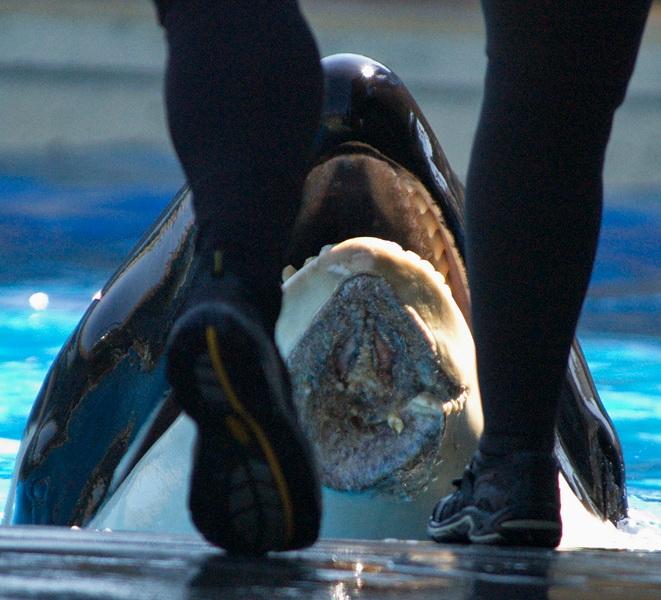SeaWorld Un-Tanked
“If you were stuck in bathtubs for 25 years don’t you think you’d go a little psychotic?” says a former trainer from SeaWorld in the popular Netflix documentary, Blackfish.
The deepest tank at SeaWorld Orlando is 40 feet down. These mammals almost never stop moving in the wild, but being stuck in such close quarters, they stop swimming for up to 5 hours straight. SeaWorld confines whales that often swim up to 100 miles a day in the wild to tanks that, to them, are the size of a bathtub. An orca at SeaWorld would have to swim the circumference of the main pool 1,900 times in one day to swim that same distance they do in the wild.
Orcas in the wild have an estimated maximum lifespan of 60 to 70 years for males and 80 to over 100 for females. The median age of orcas in captivity is only nines, and orcas at SeaWorld rarely make it there.
In the wild, Killer Whales’ dorsal fins stick straight up. All captive adult male orcas have collapsed dorsal fins, likely because they have no space in which to swim freely and are fed an unnatural diet of thawed dead fish. SeaWorld claims that this condition is common—however, in the wild, it rarely ever happens and is a sign of an injured or unhealthy orca.
Orcas are highly social animals that live in stable social groups ranging from two to 15 individuals. In some populations, children stay with their mothers for life. In captivity, orcas are forced to live with orcas from other family units, or pods, who speak a completely different language than they do and are constantly moved between facilities for breeding and to perform. Orcas that are not compatible are forced to live in tight quarters together. The resulting anxiety and tension cause fights between them. In the wild, Orcas have strong social bonds that may last for life, their social rules prohibit serious violence against each other, and when fights do occur, they can find space to flee. In captivity, there’s nowhere for them to go, which leads to injuries and death. Orcas in captivity gnaw at iron bars and concrete from stress, anxiety, and boredom, sometimes breaking their teeth and resulting in painful dental drilling without anesthesia.
In the wild, despite centuries of sharing the ocean, there has been only a single reliable report of an Orca harming a human being. Because of the stress involved in being deprived of everything that is natural and important to Orcas in captivity, they have attacked and killed three humans just since 1991 and there has been more than 70 incidents at SeaWorld alone involving the injury of a person.
Sam Simon from Blackfish states, “We are going to be thought of as barbarians when people look back and see that we put Orcas in concrete bathtubs.”
FSA CONNECTION
- What is the author’s opinion on SeaWorld?
- What literary device does the title use?
- Define the term “deprive”
- Choose a sentence that best summarizes the main idea.
- How does the Netflix documentary Blackfish contribute to the piece?
Your donation will support the student journalists of Freedom High School - FL. Your contribution will allow us to purchase equipment and cover our annual website hosting costs.

Diana Mascio is a Freedom High school junior born and adopted from Bacau, Romania in 1999. Adopted parents Ken and Noel flew across the world to come...

Brooke Rohan is a 16-year old junior at Freedom High School, and this is her first year on the Journalism staff. She was a member on the Freedom swim team...





